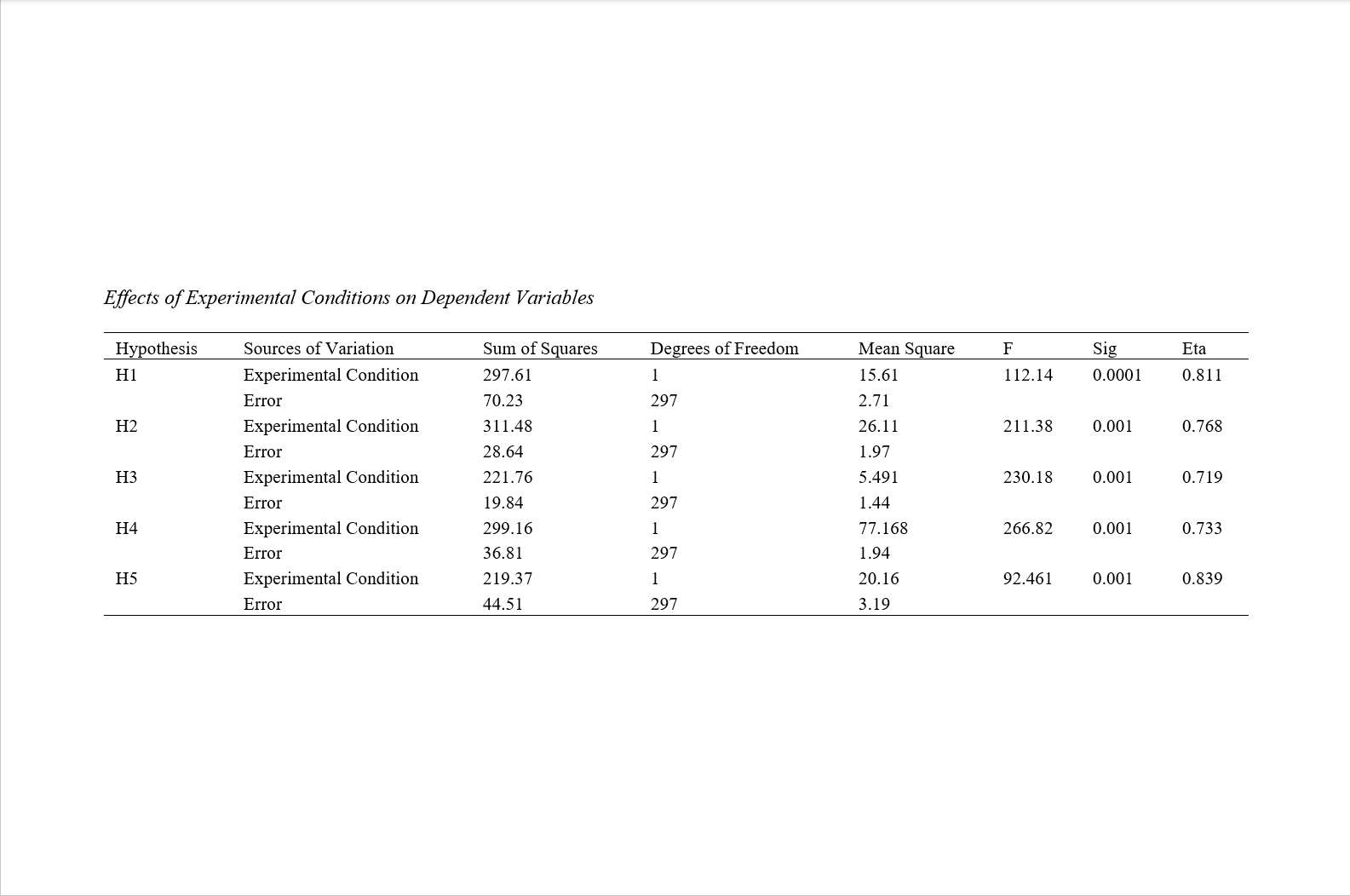Evaluation of Consumer Behavior Responsiveness to Neuromarketing with an Emphasis on Consumer Loyalty Based on Oliver’s Model
Keywords:
Neuromarketing, Consumer Behavior, Consumer Loyalty, Cognitive Loyalty, Emotional Loyalty, Intentional Loyalty, Behavioral LoyaltyAbstract
Objective: The aim of this study is to explore green research and development (R&D) in the home appliance industry.
Methods and Materials: This research is applied in nature, and the data collection method is descriptive-survey. Initially, by reviewing the literature and using qualitative content analysis, 30 factors were extracted as indicators for green development and formulation, categorized into five dimensions: green management, product and stakeholder performance, internal environment management, green innovation, and energy and resource consumption management. In the second stage, the fuzzy Delphi technique was employed, with a two-stage survey conducted among 15 experts selected through purposive sampling to achieve group consensus and filter the findings from the first stage. Finally, to assess the opinions of employees in the home appliance industry regarding green R&D indicators, a questionnaire was distributed among 170 employees, selected through Cochran’s formula and simple random sampling. The results were analyzed using SPSS software and a one-sample t-test.
Findings: The findings showed that all these indicators were significantly identified as green R&D indicators in the home appliance industry at a 95% confidence level. Based on the results, the product design improvement indicator, with an average score of (4.18), received the highest rating from employees. This was followed by access to new markets and customers with an average score of (4.14), a green image of the company with an average score of (4.11), green product innovation with an average score of (4.10), and enhancing the company's green position with an average score of (4.02), respectively.
Conclusion: The findings highlight the significance of improving product design, accessing new markets, and promoting a green company image as crucial factors for achieving sustainable development.
Downloads
References
Akoglu, H. E., & Özbek, O. (2022). The effect of brand experiences on brand loyalty through perceived quality and brand trust: a study on sports consumers. Asia Pacific Journal of Marketing and Logistics, 34(10), 2130-2148. https://doi.org/10.1108/APJML-05-2021-0333
Al-Nafjan, A. (2022). Feature selection of EEG signals in neuromarketing. Peerj Computer Science, 8. https://doi.org/10.7717/peerj-cs.944
Alsharif, A. H., Salleh, N. Z. M., Abdullah, M., Khraiwish, A., & Ashaari, A. (2023). Neuromarketing Tools Used in the Marketing Mix: A Systematic Literature and Future Research Agenda. Sage Open, 13(1). https://doi.org/10.1177/21582440231156563
Anjorin, K. F. (2024). The Influence of Consumer Behavior on Sustainable Marketing Efforts. International Journal of Management & Entrepreneurship Research, 6(5), 1651-1676. https://doi.org/10.51594/ijmer.v6i5.1128
Behl, A., Jayawardena, N. S., Shankar, A., Gupta, M., & Lang, L. D. (2023). Gamification and Neuromarketing: A Unified Approach for Improving User Experience. Journal of Consumer Behaviour, 23(1), 218-228. https://doi.org/10.1002/cb.2178
Bojić, L., Tucaković, L., & Nikolić, N. (2021). Neuromarketing Unmasked: A Review of Current State in the Field. Ekonomika Preduzeca, 69(7-8), 403-413. https://doi.org/10.5937/ekopre2108403b
Chang, E.-C., Wen, B., & Tang, X. (2021). The effect of winning-losing perception on consumers’ variety-seeking behavior. European Journal of Marketing, 55(6), 1624-1642. https://doi.org/10.1108/EJM-07-2019-0565
Dehghanpouri, H., Abdavi, F., & Eskandarnezhad, M. (2016). Investigating the effect of sports brand advertising on electroencephalographic changes in customers in neuromarketing. Sports Management Journal, 8(3). https://jsm.ut.ac.ir/article_59306.html?lang=en
Eivazi, A. (2016). Designing a model for the effectiveness of shape and color in advertising on customer decision-making using a neuromarketing approach Payame Noor University].
Hamidi, N., Sharafi, A., & Asgari, N. (2022). Presenting a model for the development of new banking products based on seed marketing. Modern Marketing Research, 12(3), 35-70. https://nmrj.ui.ac.ir/article_26907.html?lang=en
Hsu, L., & Chen, Y. J. (2020). Neuromarketing, Subliminal Advertising, and Hotel Selection: An EEG Study. Australasian Marketing Journal (Amj), 28(4), 200-208. https://doi.org/10.1016/j.ausmj.2020.04.009
Iloka, C. B., & Onyeke, K. J. (2020). Neuromarketing: A Historical Review. Neuroscience Research Notes, 3(3), 27-35. https://doi.org/10.31117/neuroscirn.v3i3.54
Jain, N. K., Kamboj, S., Kumar, V., & Rahman, Z. (2018). Examining consumer-brand relationships on social media platforms. Marketing Intelligence & Planning, 36(1), 63-78. https://doi.org/10.1108/MIP-05-2017-0088
Javor, A., Koller, M., Lee, N., Chamberlain, L., & Ransmayr, G. (2013). Neuromarketing and Consumer Neuroscience: Contributions to Neurology. BMC Neurology, 13(1). https://doi.org/10.1186/1471-2377-13-13
Mukherjee, S., Das, M. K., & Chakraborty, T. K. (2023). Viral Marketing in Increasing Brand Awareness and Predicting Purchase Intention: Exploring Mediating Role of Brand Loyalty in FMCG Sector. Sch J Econ Bus Manag, 4, 61-77. https://doi.org/10.36347/sjebm.2023.v10i04.001
Pasaribu, R. M., Tampubolon, F. Y., & Matodang, V. (2023). Trust Mediates Channel Integration and Viral Marketing in Repurchase Intention Golds Saving Products In PT Pegadaian Pringgan Medan. International Journal of Scientific Research and Management (IJSRM), 11(06), 4956-4966. https://doi.org/10.18535/ijsrm/v11i06.em03
Ramadhani, H., & Anggrainie, N. (2023). Pengaruh Persepsi Harga, Brand Equity, Viral Marketing, Brand Ambassador, Review Produk, dan Customer Relationship, Terhadap Keputusan Pembelian Produk Skincare Skintific di Tiktok Shop. Mufakat: Jurnal Ekonomi, Manajemen dan Akuntansi, 2(4), 703-717. https://jurnal.anfa.co.id/index.php/mufakat/article/view/983
Salem, S. F., & Salem, S. O. (2019). Effects of Social Media Marketing and Selected Marketing Constructs on Stages of Brand Loyalty. Global Business Review, 22(3), 650-673. https://doi.org/10.1177/0972150919830863
Singh, P. (2023). What Do You Need to Know? A Systematic Review and Research Agenda on Neuromarketing Discipline. Journal of Theoretical and Applied Electronic Commerce Research, 18(4), 2007-2032. https://doi.org/10.3390/jtaer18040101
Tabelessy, W. (2024). Brand Love: Mediating Effect of the Relationship Between Social Media Marketing, Brand Loyalty and Brand Equity iPhone Brand Smartphone in Ambon City. Ijir, 2(5), 439-452. https://doi.org/10.59890/ijir.v2i5.1928
Vuković, D. (2023). Ethical Issues in the Application of Neuromarketing Research. Map Social Sciences, 4(1), 67-81. https://doi.org/10.53880/2744-2454.2023.4.67
Wang, L. (2024). Leveraging Emerging Technologies in Pricing Strategies and Consumer Behavior: Case Studies From China's Innovative Markets. Ijetaa, 1(6), 6-12. https://doi.org/10.62677/ijetaa.2406121

Downloads
Additional Files
Published
Submitted
Revised
Accepted
Issue
Section
License
Copyright (c) 2024 Saeid Farjam (Author); HamidReza Soleymani (Corresponding Author); Neda Ahmadi Goltepe, Masoume Afkari Samareen, Ali GolAmini, Hassan Ansari, Ghafar Kayani, Saeed Yousefzadeh (Author)

This work is licensed under a Creative Commons Attribution-NonCommercial 4.0 International License.















